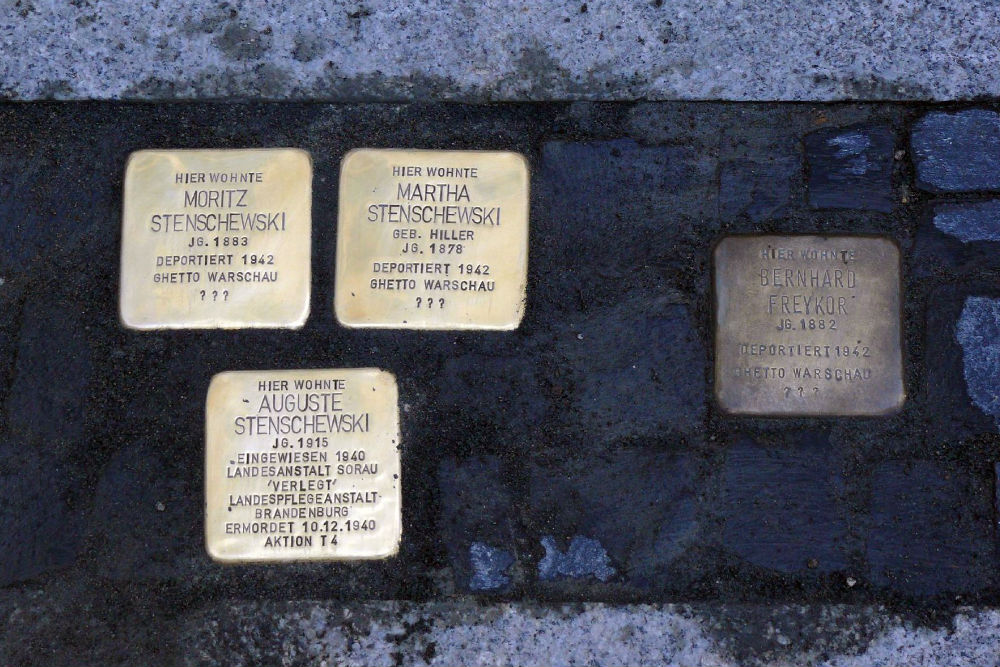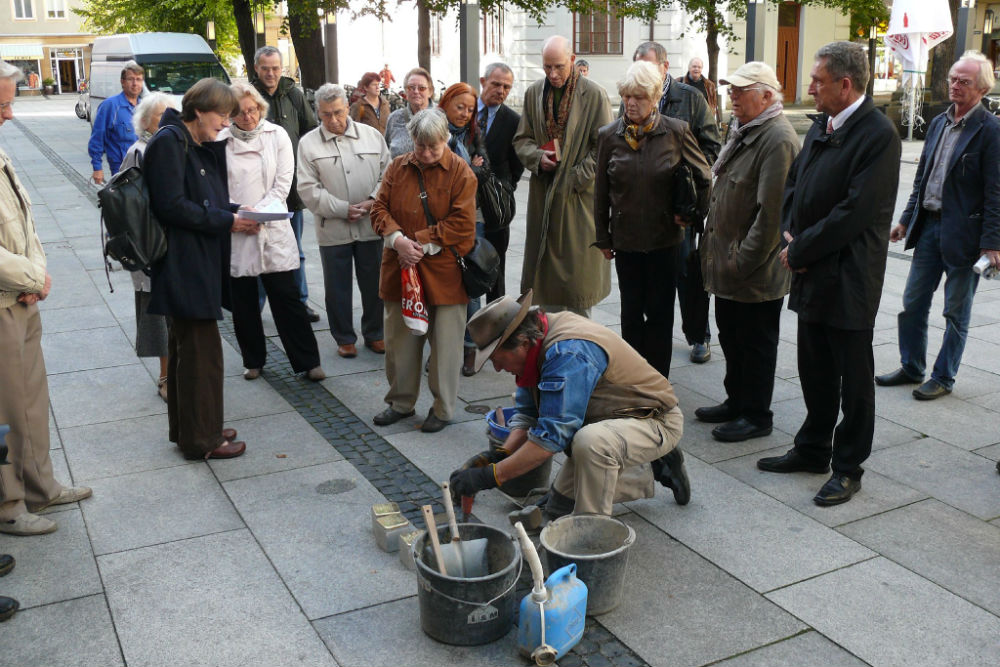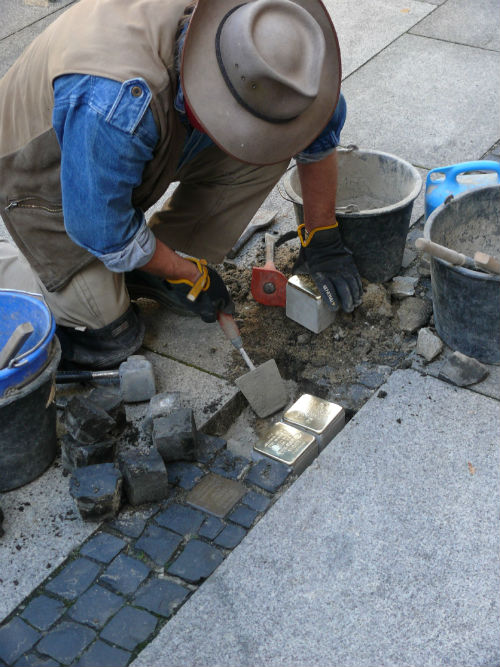Stumbling Stone Schlo▀kirchplatz 3
These memorial stones (Stolpersteine or stumbling blocks) commemorate:
* Moritz Stenschewski, born 1883, deported 1942 Warsaw Ghetto, fate unknown.
* Martha Stenschewski nÚe Hiller, born 1878, deported 1942 Warsaw Ghetto, fate unknown.
* Auguste Stenschewski, born 1915, admitted 1940 to Sorau Regional Institute, "relocated" to the Brandenburg Provincial Care Institute, murdered on 10 December 1940 in Cholm near Lubin under the T4-Action.
* Bernhard Freykor, born 1882, deported 1942 Warsaw Ghetto, fate unknown.
In 1923, the Stenschewski family of five moved from Rogasen, Poland, to Cottbus, Germany, where Moritz purchased a house with a butcherĺs shop on Schlosskirchplatz 3. He ran the shop until he was arrested in 1938 along with many other Jewish businessmen and deported to Sachsenhausen concentration camp. He was released a month later. Then in January 1939, he was presented with a property tax bill which he could pay only by selling the property at Schlosskirchplatz to another Cottbus resident. The following year, Mortiz, Martha and Auguste Stenschewski were forced to go to the Jewish community house.
Later, Auguste was declared mentally ill and a danger to others and was sent to the Sorau state hospital. Then came the order by the Supreme President of Brandenburg Province that all patients must be transferred to health care institutions. Auguste was killed at age 25 ľ a victim of the Special Action "T4"(Euthanasia).
Two years later, Moritz and Martha were deported to the Warsaw Ghetto and probably arrived there, but further information on their fates is not known. The fates of daughter Josephine and granddaughter Evelyne are also unknown. Daughter Adele had died earlier, in 1932.
Bernhard Freykor was a meat seller / butcher who was moved to a Jewish House before he was deported to the Warsaw Ghetto. No other information about him was found and his fate is unknown.
The small brass plaques, in the pavement in front of houses of which the (mostly Jewish) residents were persecuted or murdered by the Nazis, mention the name, date of birth and place (mostly a concentration camp) and date of death.
In many other cities, mainly in Germany but also in other European countries, the memorials also can be found. There are already many thousands of these plaques and their number is still counting. Almost all Stolpersteine are laid by the German artist himself, Gunter Demnig.
For more information and pictures, please visit Stolpersteine Brandenburg (in German).
Do you have more information about this location? Inform us!
Source
- Text: Fedor de Vries & Anne Palmer
- Photos: Wie-wolf
- Laudatio, pages 4-5
Nearby
Point of interest
Monument
- Soviet War Memorial Cottbus - Cottbus
- War Memorial Kiekenbusch - Kiekenbusch (Cottbus)
- War Memorial Leuthen - Leuthen
Cemetery
- Mass Grave Soviet Soldiers Cottbus - Cottbus
- Mass Grave Polish Forced Laborers - Cottbus
- German War Graves Cottbus - Cottbus







